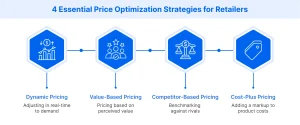The Future of Accounting: AI and Automation Trends

AI will enhance efficiency and accuracy for accountants as they focus on higher-value accounting tasks; however, it will not replace human jobs.
Automating data processing and analysis.
Automation software offers cost savings by automating accounting workflows like global payments and invoice management.
1. Automation
Automation in accounting may seem intimidating at first, with fears relating to job displacement and data security concerns being among them. Yet automation software provides businesses with more cost-effective scale while providing the ability to analyze large volumes of data – helping accountants become strategic advisors to business leaders.
Letting technology handle time-consuming ledger entries allows accounting and finance teams to focus on high-impact financial management work such as analyzing budget variances or creating forecasting models, increasing efficiency while decreasing double checking requirements and speeding up processes.
AI and automation can support accounting data workflow, from initial identification of trends or anomalies through finalized reports for both external and internal stakeholders. This ensures that quality information is processed while also decreasing risks of errors that could compromise its integrity.
2. Data Storytelling
Many finance professionals worry that AI will replace their jobs, but this is far from being true; AI signals a new era in accounting technology.
With AI-fueled financial systems, accountants now have more access to pertinent information and data to make more informed business decisions. Technologies like RPA and ML are revolutionizing accounting by automating repetitive tasks to free up time for analysis, planning, and decision-making tasks – helping accountants take a proactive approach towards managing their own practices more effectively.
AI can assist accounting professionals by reducing human error and providing real-time analytics that help improve bottom line results and cash flow. Tipalti’s Ask Pi digital assistant, for example, features advanced automated general ledger account coding that identifies patterns or anomalies in supplier invoices to enhance spending management and spending control. Real-time reporting can be tailored specifically for organizational needs to enable accountants to make timely and informed decisions.
3. Collaboration
Accounting landscape is rapidly undergoing profound change due to rapid technological advancements and an emerging paradigm that places an increased focus on technology integration into accountancy practices. This paradigm shift is shifting the profession away from strictly numerical approaches towards more holistic advisory roles for business decision making.
Automation and AI tools are increasingly automating tasks such as data entry, reconciliation and report generation – freeing accountants to focus on interpreting complex data for valuable insights while improving efficiency, increasing accuracy and decreasing costs.
Accounting has witnessed another key trend: cloud technology. This allows real-time collaboration, enhanced scalability and tightened security measures; as well as revolutionizing accountants’ work practices from an individualistic to more collaborative and interconnected sector.
Blockchain is another emerging accounting technology that offers unparalleled precision for asset management and transaction verification, while providing an immutable ledger that reduces fraud risks while creating a clear audit trail. Accounting professionals should embrace these advances to stay abreast of current technological trends.
4. Security
Automation and AI pose serious and intricate security threats, particularly for accounting procedures that are moving online. Accountants must update their cybersecurity policies and safeguards with multi-factor authentication mechanisms in place as well as training teams on detecting social engineering attacks to protect sensitive financial data from harm.
At the core of it all lies data privacy concerns related to intelligent automation deployment. Firms should be clear in their information-sharing practices and verify that any solution providers meet GLBA’s stringent encryption requirements during transmission and storage, in addition to offering 24/7/365 security monitoring and alerts.
Due to increased automation and cobots (smaller robots that work alongside humans) in manufacturing, workers may face job displacement. To mitigate this risk, firms should ensure that those displaced have the training and skills to transition into new occupations while continuing productivity increases through technology use.






